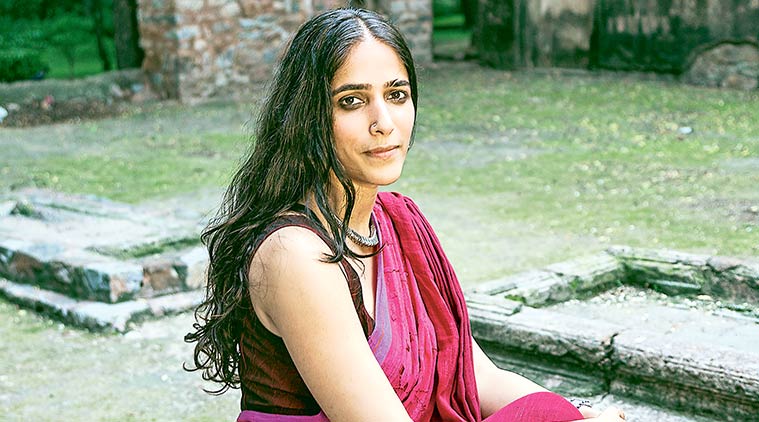

In each successive book I have tried to master my craft and technical skills,” says the author–artist, who will work on Indo-Persian art forms next. While acrylic colours gave the required sturdiness to her earlier books, Patil moved to watercolours for her fourth title as it seemed consistent with the theme of the book “Content again played a part in executing Aranyaka, because a book about nature and forest demanded a non-toxic medium. So, Adi Parva and Sauptik have a rich treatment with colours, collages, and a shift in style.” But it would be a disappointing choice to have a similarly flat treatment while dealing with an epic like Mahabharata. So, it made sense for the book to be in black and white.

Content partly dictates the choice of medium, Patil says, adding, “Kari is an urban tale of a person’s grey emotional landscape. During her talk today, Patil will take a retrospective look at the creative processes and conscious choices that formed the visual variety and artistic treatment of each book. While there may be some themes and subtexts connecting them, each of her four books is executed in a different style and form. As a first mover also, I had an easy run as there was little competition, but it also meant working with them as publishing houses had not worked on graphic novels before,” adds Patil, who studied art at the School of the Museum of Fine Arts, Tufts University. I feel free to play around with form because I do not try to emulate other graphic novels, or a long lineage to draw from. “Not having read other graphic novels was liberating in a way, because I was free from the compulsion of following templates. So graphic novels were a logical path to take, to work on my two skills together.” The author, who received the Nari Shakti Puraskar in 2017, will give a talk in the city today.Īt the session titled ‘Creative Journey’ hosted by the Loft Forum, Patil will share her experiences of working on each of her books, Kari, The Parva duology - Adi Parva:Churning of the Ocean (2012) and Sauptik: Blood and Flowers (2016) - and the recently published Aranyaka: Book of the Forest (2019), in collaboration with author Devdutt Pattanaik.


But it came naturally to me because my brain is really partitioned into processing text and images. Now the author of three more books, the writer–painter Patil says, “I had not grown up reading graphic novels. When Amruta Patil began working on Kari (2008), her first graphic novel, it was an instinctive move. By Kinjal Sethia Today, attend a talk by Amruta Patil, India’s first female graphic novelist, who will speak about her art and her books


 0 kommentar(er)
0 kommentar(er)
